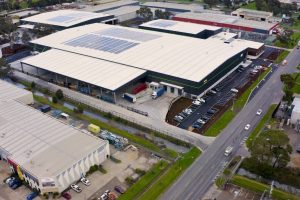Table of Contents:
- The Development of Drone-Based Delivery Systems
- Current Trends in Drone Delivery
- Prospects and Challenges in Australian Delivery Logistics
- Evaluating the Viability of Delivery Drones in Australia
- Flying Into the Future
The rapid advance of drone technology is making their use in Australia for delivery logistics increasingly more plausible.
The world of logistics and delivery has undergone significant transformations in recent years. One of the most exciting developments on the horizon (pardon the pun) is the use of drones for delivery purposes. Drones, also known as unmanned aerial vehicles (UAVs), have the potential to revolutionize the delivery industry by offering faster, more efficient, and environmentally friendly solutions. In Australia, where vast distances and remote regions pose unique challenges for logistics, the exploration of drone-based delivery systems holds particular promise.
In this article, we will delve into the development of drone-based delivery systems, current trends and options, and ultimately answer the question: Are drones really a viable option for deliveries in Australia?
The Development of Drone-Based Delivery Systems.
In a 2018 paper published by the Department of Infrastructure, Transport, Regional Development and Communication, drones were described as having “the potential to transform retail around the world…with regional trials demonstrating how delivery drones can bring a wider range of products within rural and suburban consumers’ reach. Flying above the traffic, drones can quickly and cost-effectively deliver small packages of food, medicine and other household items, saving businesses and consumers time and money, while also helping to reduce congestion, greenhouse gas emissions and accidents on the road.”
While this paper focussed primarily on drone use in the Australian Capital Territory, their application can easily be seen in the context of a wider Australian viewpoint.
The historical perspective
The concept of drone delivery is not exactly new. Early experiments with using UAVs to deliver small payloads date back to the early 2010s. However, significant advancements in drone technology, including improved battery life, increased payload capacity, and enhanced navigational capabilities, have propelled the idea of drone-based deliveries into the mainstream.
The regulatory framework
Australia has been proactive in establishing a regulatory framework to govern the operation of drones. The Civil Aviation Safety Authority (CASA) oversees drone regulations and has been working to strike a balance between enabling innovation and ensuring safety. As regulations evolve, they have increasingly accommodated drone deliveries, opening up new possibilities for the industry.
On a wing (and a prayer)
Several successful drone delivery trials and initiatives have taken place in Australia. For example, Project Wing has been granted CASA approval to deliver supplies to customers who live within a 10 km radius of one of their base stations. These supplies include food and drinks, over-the-counter pharmaceuticals, hardware items and recreational supplies.
Similarly, the Melbourne-based company Swoop is currently engaged in providing access to medical supplies to remote communities in Australia and worldwide.
Current Trends in Drone Delivery.
The field of drone technologies continues to evolve as companies develop various types of drones suitable for different delivery needs. From the small quadcopters capable of delivering lightweight packages to much larger fixed-wing drones designed for longer distances and heavier payloads, the range of options available offers flexibility and scalability.
Drones need their own dedicated infrastructure
Efficient drone deliveries require the development of appropriate infrastructure. This includes establishing dedicated landing sites, charging stations, and navigation systems. Advances in technology, such as automated landing and charging mechanisms, are now streamlining the infrastructure requirements for drone-based delivery systems.
The challenge of “Last-Mile” delivery
The final leg of an item’s journey from a distribution centre to the customer’s doorstep is often the most complex and costly. Drones present a robust opportunity to overcome the challenges associated with these “last-mile” deliveries.
By taking to the air, drones can bypass traffic congestion, navigate difficult terrain, and reach remote areas more efficiently, providing access to goods and services previously limited by geographical constraints.
Prospects and Challenges in Australian Delivery Logistics.
The potential benefits of drone deliveries in Australia are numerous. First and foremost is speed and efficiency. Drones can significantly reduce delivery times, particularly for time-sensitive goods such as medical supplies or perishable goods.
Additionally, drones offer significant cost savings by eliminating the need for traditional delivery infrastructure and reducing labour costs. Drone-based deliveries are also significantly more environmentally sustainable, as they produce fewer carbon emissions compared to traditional delivery vehicles.
Specific Challenges for Drones in Australia
She’s a big place, Australia! Our vast geography and diverse weather conditions present unique challenges for drone deliveries. From extreme heat to tropical storms, drones must be able to operate reliably in our often complex and changeable environments.
So while the prospects for drones in delivery logistics are promising, several challenges need to be addressed. Regulatory compliance, for instance, is crucial to ensure the safe and responsible operation of drones in our skies. There are also security and privacy concerns that will need to be addressed to ensure public acceptance and prevent misuse of drone technology.
Lastly, the concept of delivery drones needs to overcome scepticism and diminish the negative perception surrounding their use. Gaining the trust of the general public may, in fact, be the biggest hurdle that the implementation of delivery drones has to conquer.
Evaluating the Viability of Delivery Drones in Australia.
So…the big question is: “Will delivery drones ever be a viable option in Australia?” As we have seen, there have already been some successful drone delivery projects that highlight the practicality and effectiveness of drones in specific scenarios.
For example, in rural and remote regions where traditional delivery options are limited, drones have demonstrated their ability to provide timely delivery of essential supplies. Similarly, in emergency situations where quick delivery is crucial, drones can save lives by delivering medical equipment or supplies to hard-to-reach areas.
Considerations for Different Industries
Different industries stand to benefit from drone deliveries in unique ways. E-commerce companies can apply drone technology to provide faster and more efficient deliveries, thus improving customer satisfaction.
In the healthcare sector, there is certainly scope for drones to enhance existing emergency response capabilities and enable more rapid delivery of medical supplies.
In the agricultural sector drones, equipped with sensors can provide valuable data for precision farming techniques which optimise crop management and reduce costs. Indeed, many farmers and agronomists have utilised drone technology for quite some time as a way of assessing crop yields, pesticide use and fertiliser coverage.
Flying Into the Future.
Drones offer an exciting and promising frontier in delivery logistics. However, the successful integration of drones into Australia’s delivery logistics networks will depend on continued innovation, collaboration and regulatory adaptability.
The ongoing research and development efforts currently underway will enhance the capabilities of drones. This includes extending flight range, increasing payload capacity, and providing augmented security and safety features.
Collaborations between drone manufacturers, logistics companies, and regulatory bodies will also be essential in order to address challenges and identify potential solutions. By refining infrastructure requirements, addressing public concerns through education and outreach, and developing advanced air traffic management systems, these stakeholders can ensure the safe integration of drones into our existing logistics frameworks.
While challenges still exist, the ongoing advancements in technology, supportive regulatory initiatives, and successful use cases have all demonstrated that drones are a viable option for deliveries. As the industry continues to evolve, collaboration and innovation will play a pivotal role in harnessing the full potential of drones and shaping a future where efficient and sustainable airborne delivery logistics become a reality across Australia.



